I love, love, love to teach writing... now. I honestly hated it when I first started teaching kindergarten because my kids couldn't write anything and I didn't know where to start. The resources my campus had were made for Kindergarten through second grade. These materials helped me ZERO when I was planning writing for my littles who couldn't even write their names. This all made for a VERY frustrating 45 minute writing time each day for my class full of five year olds and for me. I felt like a failure and so did my kids.
So what changed?
First of all I went to my principal and explained my frustration and talked to the other Kindergarten teachers on my campus. I asked if I could stray form the curriculum and start smaller. Thankfully my principal agreed and my teammates were excited to ditch our curriculum and start again. This was around October of our school year. There was still time to fix things - phew!
There were many things that changed in our room to help us become successful writers. For one, we wrote all day long in a balanced literacy program, which included components of writing into our whole day - from playing word wall games and singing sight word songs for transitions to adding fun ways to write into our daily five choices. I will go more into our schedule and balanced literacy later. For our explicit writing time, we started with the three ways to write. This was an idea I borrowed from our daily five - three ways to read. (Click on the picture to get these labels for free.)
We simply started with completing an activity together. My class walked around the outside of the school and used our five senses to observe the world around us.
Then we went back to the classroom and wrote with pictures what we just did together. We just wrote with pictures. No labels. No words. No sentences. This gave me the chance to then see how well we could draw. For that whole week we completed an activity and I modeled how to write with pictures and then students went and did the same. Please note that we never used crayons, just pencils and paper. Each day when I modeled, I would clarify any drawing issues we had. I especially focused on characters and setting. In just one week we understood characters and setting and how to add these into our writing when we wrote with pictures. I also taught my littles to know what a small moment is. They were small moment experts at the end of the week and knew that our activities that we were writing about were a small moment from our whole day.
Then on week 2 we learned how to write with letters. On day one, I challenged my kiddos to think of a small moment from their lives - either at school or home. To help them think I gave them all Small Moments Catchers hats.
We first shared these small moments in a whole brain teaching method called Teach-Okay, then we went to write with pictures those small moments. At the end of independent writing, we learned about our writing folders and placed our stories on the green dot side, because we would add more to that story. I even showed them my big writing folder with dots inside as well.
On day two of this week, we pulled out our new writing folders and grabbed the small moment from the day before to learn our second way to write - write with letters. We call these letters "labels". Labels are when we get our mouth ready and say the first sound in the word, and then write it down. This went along with one of our reading strategies from guided reading groups.
I challenged my littles to add three labels to their stories. Of course all of this was modeled with my folder and writing first in front of all of the kiddos.
The next day (day three) we practiced more with labels by labeling the whole classroom with post it notes. I gave each student a small stack of post its and they just labeled everything they could based on the beginning sound. I also introduced this poster on this day using my students' pictures.
This anchor chart helped my littles to feel confident in writing the first sound of words and labeling.
Another labeling lesson we did was labeling the teacher. I used my high school helper for them to label with post it notes.
We also continued working on "writing with letters" in our writing of small moments this whole week.
For week 3, I introduced this anchor chart and told my students that we are already experts at writing.
I asked them to tell me which of these things we already know how to do. They loved that they knew how to think, draw, and label and they were ready to learn how to write with words. I modeled very slowly how to write a sentence, making a big deal about sight words that we knew and listening for sounds that we knew and celebrating those. (We work on sight words and phonics daily during our mini-lessons in between daily five/guided reading groups.) My littles felt so successful just in being able to tell me how to spell sight words and what sounds were coming out of my mouth. Some of them even commented that "If you can think it, you can say it. If you can say it, you can write it". Yay! Sprinkles to Kindergarten! The little light bulbs were coming on. Over the next few days we practiced the four steps of writing and started sharing our writing at share time. During our independent writing time, I would choose three students who were modeling a goal that I had set for the day in our mini-lesson and give them a share bear. These students would then share their writing under the document camera during share time.
Here is a little video of share time for one student from this year.
You can see the sharing that in sharing time we also know about Star Star Wish. This is just a kinder friendly method of checking for understanding and engagement with the other students and for the sharing student to get some feedback.
Can you believe this is three weeks of learning in writer's workshop? Just remember that we are writing and working on components of writing all day long. This is the number 1 key to writing success!
Over the next few weeks we have so many important mini-lessons including establish writing partners, starting writing conferences, getting differentiated paper, using writer's tool boxes, writing smiley sentences and setting goals. I will go over these parts of writer's workshop quickly for you.
Writing partners are when you assign two students to work together in independent writing time. I also give those partners a writing post (assigned area in the classroom). Make sure you're clear in your expectations for what writing partners do and whether or not you're okay students coming to your table or if you want them to stay with their writing partner. I prefer for them to not interrupt my writing conferences and use their writing partner for questions. When students are writing independently, I play classical music and I work with my conferencing students. To establish a conference day, I created this chart.
This chart reminds students of their writing conference day, as well as me. Ha ha! During writing conferences, I help students check their work, set goals, sound out phonemes in words, and decide if they're going to publish their work. Here is a video of one student at her writing conference. You can see her using the word wall at the beginning and then checking her work along the way.
Writer's tool boxes are little kits that writing partners share that have materials for them to be successful as writers.
(Grab the labels in my store!)
(Grab the labels in my store!)
There are pencils, alphabet charts, kiss stamps, space men and stretchy the word snakes. Kiss stamps are for us to kiss a period at the end of a sentence. Space men help us to put spaces between our words. Here is a video of on of my littles using the kiss stamp.
Stretchy the word snakes are little versions of this big guy.
It's a song by Jack Hartman that we dance to to help us learn and practice how to
stretch sounds. This is also one of our reading strategies from guided
reading groups.
Differentiated paper is paper that is different for all the students in the classroom. I place paper in these trays based on the writing needs of each student. They know their paper tray matches the colored dot next to their name. The color dots and paper styles should not stay the same all year. Change them as needed for your students.
Smiley sentences are sentences that have these components.
Smiley sentences are from All Students Can Shine.
We check for smiley sentences during share time. Check out this share time video to see us check for smiley sentences.
We check for smiley sentences during share time. Check out this share time video to see us check for smiley sentences.
---------------------------------------------------
Three page stories are introduced when you start having students who are writing more and ready to tell their stories over multiple pages with a beginning, middle, and end. These stories go through editing and revising by making sure each sentence is a smiley sentence before it gets published. When we publish, I type the stories for students and then they get to use the publishing tools to illustrate them. They're just crayons, but my littles sure love getting to use them!
We also dedicate our published work with a dedication stamp.
Published work also gets a cover.
Published work goes into our classroom library for the rest of the school year in the "Student Authors" bucket. They all go home at the end of the school year.
This about sums up writing small moments for kinders and firsties. Now onto a few other things...
Sometimes you need to take a break from the routine of writer's workshop. My class loves to write non-fiction as well. Tree maps are so helpful with non-fiction writing. It's truly amazing to see students using the tree map without being asked to. They really do learn that tree maps can help them write.
Here is a published book about Martin Luther King Jr.
We had a rabbit visitor last Easter and wrote these rabbit pop-up books.
Toward the end of the year we do research projects about animals. I earned a ton of non-fiction books through Donors Choose. Students pick an animal from the book collection and create a diorama about their animals and write about their animal.
After Easter break, we wrote about what we enjoyed the most about Easter and created pop-up stories.
I also love to do a unit on letter writing around Valentine's day and let my little deliver their letters to people at school. We also write letters that we actually mail home.
Poetry is another fun unit to teach in the spring time. We write poems about insects and water color them and write books to our moms for Mother's Day.
I mentioned earlier about balanced literacy. I wrote a whole post about it here. Balanced literacy is incorporating writing and reading into your whole day. Take a look at my schedule. I highlighted each component of balanced literacy.
7:40 - Announcements
7:45 - Morning Meeting and Buzz Book (Morning Message)
8:15 - Guided Reading Group 1 and Daily Five
8:30 - Mini-lesson 1 (Phonics and Shared Reading)
8:45 - Guided Reading Group 2 and Daily Five
9:00 - Mini-lesson 3 (Sight word focus/word wall)
9:15 - Guided Reading Group 3 and Daily Five
9:30 - Recess
9:55 - Science
9:30 - Recess
9:55 - Science
*Read Alouds and Notebooks are used frequently
10:15 - Guided Reading Group 4 and Daily Five
10:47 - Lunch
11:17 - Read Aloud
10:47 - Lunch
11:17 - Read Aloud
11:30 - Writer's Workshop
12:15 - Specials
1:00 - Math
12:15 - Specials
1:00 - Math
*Read Alouds and Notebooks are used frequently
2:10 - Centers
2:10 - Centers
*Reading with friends, word work, and independent writing are used daily
2:30 - Pack up
2:35 - Dismissal
2:30 - Pack up
2:35 - Dismissal
You can see that almost our whole day is filled with literacy and writing. This is going to help your writers soar in their writing and reading.
One of the most important things I have learned in teaching kindergarten is that learning truly needs to take place all day, even in transitions. You also need to have a strong lesson on phonics daily and a lesson on sigh words daily. Please note that I said STRONG, not LONG. These are both great times to use your word wall. I state daily that "the word wall is there to help us learn".
For phonics, I focus on two to three letters a week for the first semester. We learn them through letter hunts, songs, and printing practice.
Letter Ff hunt while wearing a frog hat
Letter Mm hunt with a monster wand
Letter Pp tracing with a polar bear
Letter tracing with turtles
Letter Tt printing with spin the top
We only give a focused twenty minutes a day to them, but then use them all day in transitions, reading groups, and our morning meeting.
I have a letter unit for each letter that incorporates a letter hunt with a fun object to use or wear, a letter tracing activity, a letter printing game, and a bubble map.
These little units provide students with quick twenty minute lessons to master each letter and it's sound.
During the second semester, I focus on chunks. Chunky monkey is one of our reading and writing strategies. Some phonics chunks we focus on are -ing, -ar, -er, qu, ch, sh, th, -oo, beginning blends, and word families. There are so many fun things to do to practice these chunks!
We also do a quick twenty minute lesson each day on sight words. There are so many fun ways to teach sigh words.
I think the best resource for sight words in Heidi Songs. They're amazing and fun. Kiddos learn how to spell sight words so quickly because of her fun songs.
Here are a few other games we love in my classroom.
QR code sight word hunts
Sight word bump
Sight word bowling
Letter necklaces
Spin a sight word
Where's the bear
King's crown
There are many fun ideas for sight words! The possibilities are endless.
These phonics lessons and sight word lessons are NOT a part of daily five. They're the mini-lessons in between each daily five round/guided reading group.
Just spend a small focused time on these lessons each day and then let students practice independently in daily five, during transitions, and even when waiting in line to go places. The joy of learning never stops!
I hope this post encouraged you to know that you can love teaching writing and your students will love learning how to write!


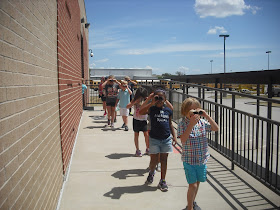
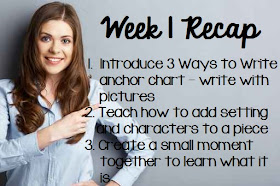













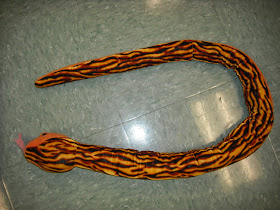











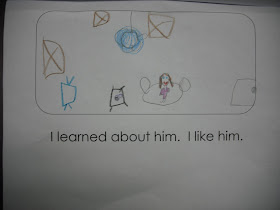































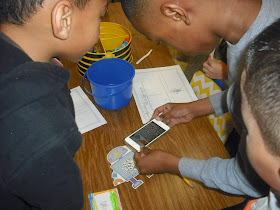










What a great, helpful, and informative blog post on writing. Thanks so much for sharing all of these great tips and ideas.
ReplyDeleteI love reading your posts! Can you go more into detail about your differentiated paper and how you decide which students use each type? Thank you!
ReplyDeleteWow! This is such a fantastic post I have printed it out. Thank you for sharing such detail and wonderful ideas
ReplyDeleteThis comment has been removed by the author.
ReplyDeleteIf you are looking for an International trip, Dubai is the best place to visit with your family and friends. when it comes to shopping mall, Dubai has the largest shopping malls and shopping places in the world. In Dubai, you can see a wide range of unique shopping and traditional shopping choices. Find out Is shopping cheap in Dubai and explore for better shopping experience.
ReplyDeleteDownload latest version of
ReplyDeleteBlackmart
Blackmart for PC
Blackmart for iPhone
and
Tutuapp
Tutuapp for PC
Tutuapp for iPhone
ReplyDeleteExcellent Blog! I would like to thank for the efforts you have made in writing this post. I am hoping the same best work from you in the future as well.
I wanted to thank you for this websites! Thanks for sharing. Great websites!
Pubg APK Pubg Mobile APK
Pubg
Pubg Download
Download Pubg Mobile
Pubg Mobile Download
This comment has been removed by the author.
ReplyDeleteFull Form
ReplyDeletewhatsapp gold
whatsapp mod
whatsapp apk
whatsapp prime
girls whatsapp group
ReplyDeletewhatsapp girls group
girls whatsapp group link
girl whatsapp group
Fullforms
ReplyDeleteFullforms
Fullforms
First you visit Carrom Pool Mod APK site once. Hello, this article is very good for you, I have liked everything mentioned in this article and I will definitely share it in my friend circle... Thank you!
ReplyDeleteBrawl Stars Mod Apk
Thank you for sharing this blog, It is an amazing blog, I am really impressed by your blog, It’s really useful www.avg.com/retail
ReplyDeletewww.avg.com/activate
namebiography.com Thanks for this post. Keep it up..
ReplyDeleteNice post, you give the clear idea of the topic and I subscribed your blog, I have some links to share here.
ReplyDeleteAlso click...
is chicken liver good for kidney patients
Thanks for sharing this post. Check this:
ReplyDeleteSex oil
sex coundom
Thanks for sharing this post. Keep check this: https://packagessite.pk/jazz-internet-packages/
ReplyDelete
ReplyDeleteI found this is an informative blog and also very useful and knowledgeable
ativan 2mg online order